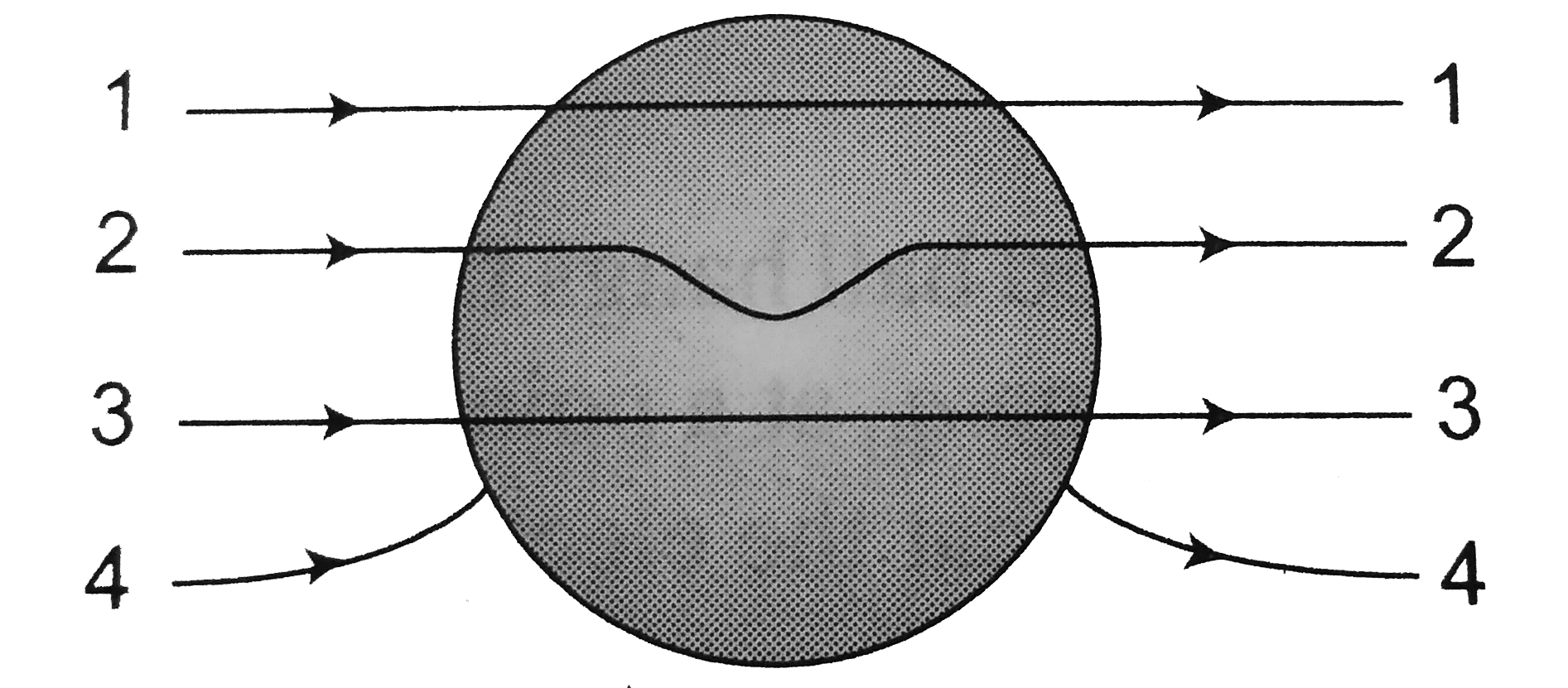A metallic solid is placed in a uniform electric field. The lines of force follow the path (s) shown in figure as

A
1
B
2
C
3
D
4
Video Solution
Text Solution
The correct Answer is:D
1, 2, & 3 are wrong because in metallic solid sphere, there is no field inside the sphere. Option (4) is correct from given reason and also it has field lines perpendicular to the surface (as required in metallic surface)
|
Topper's Solved these Questions
- MISCELLANEOUSBook:ALLENChapter:MISCELLANEOUSExercise:Exersice-03
Explore 7 Videos
- MISCELLANEOUSBook:ALLENChapter:MISCELLANEOUSExercise:ASSERTION-REASON
Explore 18 Videos
- MISCELLANEOUSBook:ALLENChapter:MISCELLANEOUSExercise:Part -II Example Some worked out Examples
Explore 1 Video
- KINEMATICS (MOTION ALONG A STRAIGHT LINE AND MOTION IN A PLANE)Book:ALLENChapter:KINEMATICS (MOTION ALONG A STRAIGHT LINE AND MOTION IN A PLANE)Exercise:BEGINNER S BOX-7
Explore 8 Videos
- PHYSICAL WORLD, UNITS AND DIMENSIONS & ERRORS IN MEASUREMENT Book:ALLENChapter:PHYSICAL WORLD, UNITS AND DIMENSIONS & ERRORS IN MEASUREMENT Exercise:EXERCISE-IV
Explore 8 Videos
Similar Questions
Knowledge Check
A metallic solid sphere is placed in a uniform electric fied. The lines of force follow the path(s) shown in Figure as
 A(a) 1B(b) 2C(c) 3D(d) 4
A(a) 1B(b) 2C(c) 3D(d) 4A metallic solid sphere is placed in a unifrom elective field. The lines of force follow the path (s) shown in figure as
 A1B2C3D4
A1B2C3D4Answer question on the basis of your understanding of the following paragraph and the related studied concepts.
Eletric field around a single charges or a charges configuration can be pictorially mapped by drawing electric field lines in space. An electric field line is, in general, a curve drawn in such a way that the tangent to it at each point is in the direction of the net. field point. An arrow on the curve is obviously necessary to specify the direction of electric field from the two possible directions indicated by a tangent to the curve. A field line is a space curve i.e., a curve in three dimensions.
Electric field lines may be taken to be continous curve without any breaks. Relative density (i.e. closeness) of the field lines at different points indicate the relative strength of electric field at those points. The field lines crowd where the field is strong and are spaced apart where it is weak.
A solid metallic sphere is placed in a uniform electric field. The electric field lines around the sphere follow the path(s) shown in the figure as:
(##U_LIK_SP_PHY_XII_C01_E03_010_Q01.png" width="80%">A1B2C3D4
A proton and an electron are placed in a uniform electric field.
View SolutionAn electric dipole placed in a uniform electric field experiences, in general
View SolutionAn electric dipole is placed in a uniform electric field. It may experience
View SolutionAn electric dipole placed in a non-uniform electric field experiences
View SolutionAn electric dipole placed in a non uniform electric field may experience
View Solution


